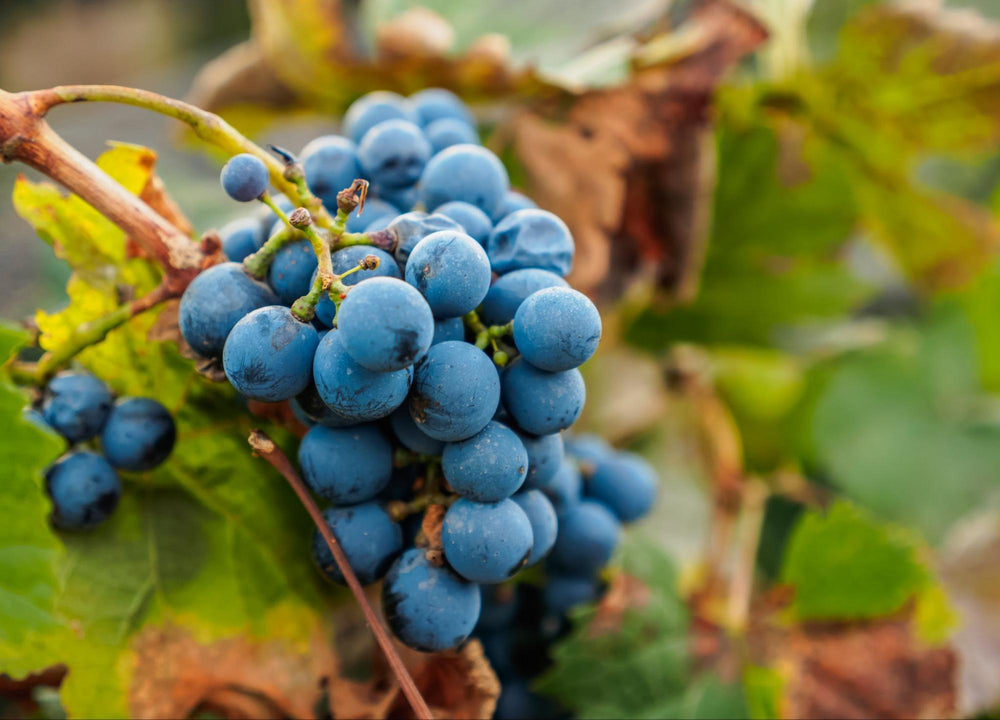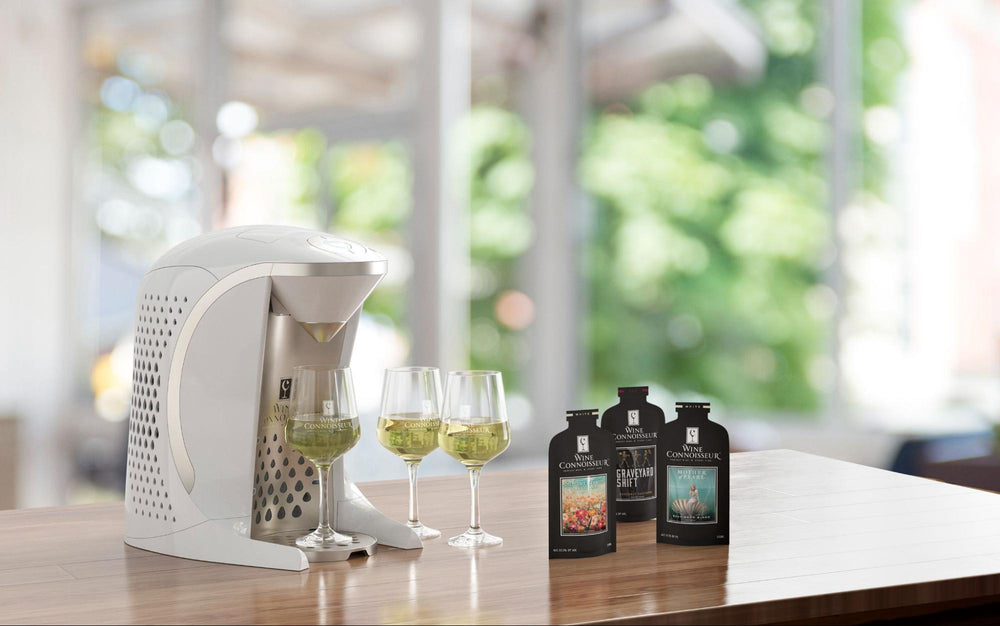The Difference Between Red and White Wine Glasses

You love your favorite wine. You’d drink it anytime, anywhere.
You’d drink it out of a tall glass or a short one, a fat glass or a skinny one. Heck, you’d drink it out of a Mason jar if you had to.
But maybe you didn’t know your favorite wine could taste even better if you put it in the proper glass.
Oh, yeah. Now you’re perking up. Could that be true?
It is. The shape and size of your wine glass directly impact the aroma, taste, and texture of your favorite wine, even before a drop has hit your tongue.
So, pour yourself a glass (or Mason jar) and read on to learn more about how to make your favorite wine taste even better simply by finding its perfect home.
Red vs White Wine Glasses

Now the glasses are important? Isn’t it enough that I know the difference between red and white?
Unfortunately for you single-set wine glass owners, glass shape is probably more important than you realize, especially if you care about getting the most from your wine.
Increasingly, studies suggest that the distribution of ethanol vapors is heavily affected by wine glass shape. Because so much of our taste is influenced by smell, ignoring the distribution of these vapors means you’re likely ignoring a great deal of flavor in your wine. So pay attention, because now we’re going to break down red wine vs white wine glasses.
In general, red wine glasses are designed to maximize oxidation with the bold, full-bodied flavors typically found in reds. Therefore, you’ll find that red wine glasses have larger bowls than whites, coaxing out the rich aromas and allowing them to shine. Some red wine glasses are even tulip-shaped to invite more air into the bowl.
Due to their larger size, red wine glasses also have more visible surface area, which is helpful for observing the pulpier texture and viscosity of a full-bodied red as it’s swirled in the glass.
White wine glasses typically have smaller bowls and narrower openings to retain the cool temperature of white wine and to direct that vino onto specific areas of the palate. These shorter bowls also allow white wine enthusiasts to bring the wine closer to their nose, parsing out the more subtle notes of a delicious white.
White wine glasses have longer stems than reds. Simply put, the longer the stem, the more separation between hand and liquid. White wines are best served at cool temperatures, and body heat can quickly turn a refreshing, crisp white into a room-temp disappointment.

Varieties of Red Wine Glasses
There are three types of red wine glasses all distinguished by their different abilities to express the rich aromas of an aromatic red.
Full-bodied red wine glasses, also known as Bordeaux glasses, represent the largest red wine glasses you’re likely to find. This generous shape coaxes the ethanol vapors seeping off the liquid’s surface past the nose, avoiding the more pungent alcohol scents and enabling greater appreciation of the wine’s fruity aromas.
In drinking from a Bordeaux glass, the wide circumference of the lip coaxes the wine to cover a wide surface of the palate, allowing a comprehensive, smooth taste to best parse out the unique flavor profile of a red bursting with character. The best wines for a full-bodied glass are those with a high tannin and alcohol content, like a bold Zinfandel, Petit Sira, or Cabernet Sauvignon.
Moving down in the size spectrum, next up is the medium-bodied red wine glass. This design is optimized to soften the spicy flavors of a punchy red, trapping more of those ethanol vapors within the bowl. The best wines for these glasses are those of lighter alcohol content with savory characteristics, teeming with earthy and meaty aromas.
The smallest red wine glasses are, you guessed it, light-bodied glasses, also known as Burgundy glasses. In this design, the relatively sizable bowl allows ample room for aromas to mingle and oxygenate, while the shorter, narrower lip draws the wine onto the tip of the palate.
This is a prime tasting location for appreciating the sweet, floral notes within a wine. As the name suggests, this design is best for light-bodied reds like a Pinot Noir, Nebbiolo, or Floral Syrah, but could also be a home for a full-bodied white or Champagne aching to be sipped.
To sum up, if you’re drinking your favorite red wine from a shorter, narrower white wine glass, you’re likely missing out on some of those rich aromas that you were promised when you popped open the bottle.
White Wine Glasses
When compared to red wine glasses, white wine glasses typically have shorter bowls, narrower lips, and long stems. Each element of these glasses optimizes the cleaner, more acidic profile of white wines. We can break down each design decision by looking at… drumroll, please… physics!
In chilled liquids, molecules are slower and less active, creating less natural aroma teeming off the wine’s surface. The short bowl of these white wine glasses allows enthusiasts to bring their nostrils closer to the source, an integral component of sniffing out those more subtle aromas of white wine.
There are two main types of white wine glasses, those for high-acid whites and full-bodied whites.
High-acid wine glasses are the smaller of the two with narrower openings. In drinking, this shape coaxes the wine towards the center of the palate, where our tongues are more attuned to detect tasteful acidic qualities. These high-acid wines typically contain a lower alcohol percentage, like Albariño, Sauvignon Blanc, and Dry Riesling.
On the other side of the spectrum, full-bodied wine glasses are slightly larger with wider openings, though still smaller than traditional red wine glasses. This generous shape allows for slightly more aeration, accentuating the richer textures of a full-bodied white like a Viognier or a Chardonnay.
A red wine glass will still be a fine home for white wine in a pinch, though some of that acidic, sweet flavor is likely being lost on the less discerning areas of the palate.

Specialty Wine Glasses
Of course, in the wide world of wine, there’s more than just red and white. Let’s explore a few specialty wine glasses and break down why each design is perfect for the vino it’s designed to hold.
Port glasses look like ordinary glasses that spent too much time in the dryer. The small bowl and narrow lip trap the ethanol vapors in the bowl, reducing oxygenation and keeping those powerful fortified wine flavors packed in. The smaller opening concentrates sweetness on the tip of the tongue, the best area of the palate for appreciating those sweet flavors found in a hearty fortified wine.
Grappa glasses are known for their distinct gourd shape, made up of a small, round bowl and a narrow opening. This design maintains the optimal temperature of a first-rate grappa, corralling those ethanol vapors and directing wine to the beginning of the palate.
Sparkling wine glasses are as varied as the spectrum of sparkling they hold. In general, they have a long stem and deep bowl that focuses bubble formation (known as nucleation to us wine nerds) down to a center point, while the tighter opening coaxes the wine to the tip of the tongue, accentuating the dry sweetness you’ll find in a top Champagne.
As for stemless glasses, these generally follow the same differences between stemmed wine glasses — smaller openings for whites and larger openings for reds. Of course, stemless glasses are generally better for red wine as hand contact is inevitable. Body heat quickly heats up the liquid, though red wines will be less affected as they are best served at warmer temperatures, between 54 and 65 degrees Fahrenheit.
Choose Your Glass Wisely
OK, I read the whole article…and you make some compelling points… but do I really need a new glass?
If you’re only an occasional wine drinker or mostly stick to one color, then maybe not. A killer red will still taste delicious even if its flavors are slightly muted.
But if you’re looking to get the most out of your wine drinking experience or simply want to broaden your horizons, you’ll likely notice a tangible improvement from drinking your favorite wine in its favorite glass.
Unfortunately, even the perfect glass can’t rescue a warm, poorly oxidized wine.
To ensure that each sip is refreshing and delicious, look for an expert wine aerator like the Wine Connoisseur. Sit back and relax as the Wine Connoisseur hones in on your chosen varietal’s best serving temperature and oxidation level, allowing you to enjoy every glass stress-free.



